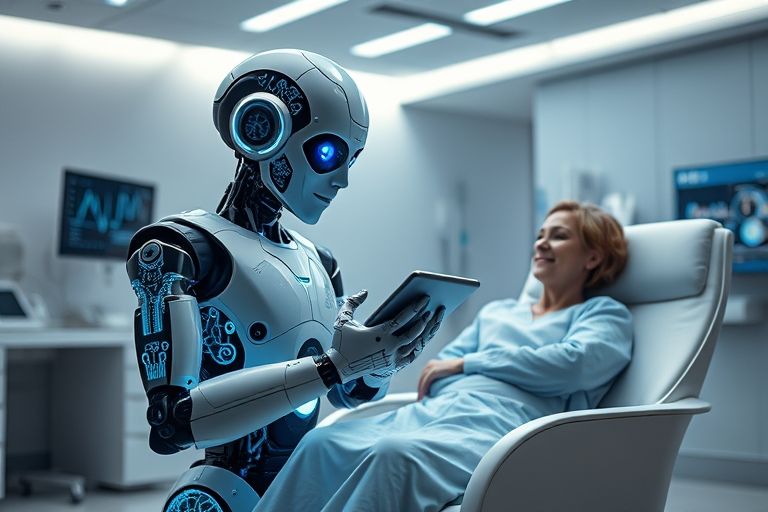
The healthcare industry is rapidly evolving with the integration of artificial intelligence (AI) and robotics. These technologies have the potential to transform patient care and assistance by improving accuracy, efficiency, and overall patient outcomes. AI-powered robotics can assist healthcare professionals in a variety of tasks, from diagnosis and treatment to patient monitoring and even surgery.
One example of AI-powered robotics in healthcare is the da Vinci Surgical System. This system uses robotic arms to assist surgeons in performing minimally invasive surgeries with greater precision and accuracy. The system also provides surgeons with a 3D view of the surgical site, which allows for more accurate and efficient procedures. Studies have shown that patients who undergo surgery with the da Vinci system have shorter hospital stays and lower complication rates.
Another example is the use of AI-powered robots in patient monitoring. These robots can monitor vital signs, deliver medication, and even provide emotional support to patients. The Mabu robot, for example, is designed to help patients with chronic diseases manage their conditions. The robot can remind patients to take their medication, provide educational information, and even engage in conversation to help patients feel less isolated.
Implementing AI-powered robotics in healthcare requires careful planning and consideration. Healthcare organizations must first identify areas where robotics can provide the most benefit, such as surgery, patient monitoring, or rehabilitation. They must also evaluate the costs and benefits of implementing these technologies, including the cost of purchasing and maintaining the robots, as well as the potential impact on patient outcomes.
Training and education are also essential for successful implementation. Healthcare professionals must be trained on how to use the robots effectively and safely, and patients must be educated on how the robots will be used in their care. Additionally, organizations must ensure that they have the necessary infrastructure and support systems in place to maintain and update the robots as needed.
The integration of AI and robotics in healthcare is still in its early stages, but the potential benefits are vast. As technology continues to advance, we can expect to see even more innovative uses of AI-powered robotics in healthcare, from personalized treatment plans to remote patient monitoring and even autonomous surgeries. The future of healthcare is bright, and AI-powered robotics will undoubtedly play a significant role in transforming patient care and assistance.
In conclusion, AI-powered robotics have the potential to revolutionize healthcare by improving accuracy, efficiency, and overall patient outcomes. Healthcare organizations must carefully consider the costs and benefits of implementing these technologies and ensure that they have the necessary infrastructure and support systems in place. As we continue to advance in technology, we can expect to see even more incredible uses of AI-powered robotics in healthcare.